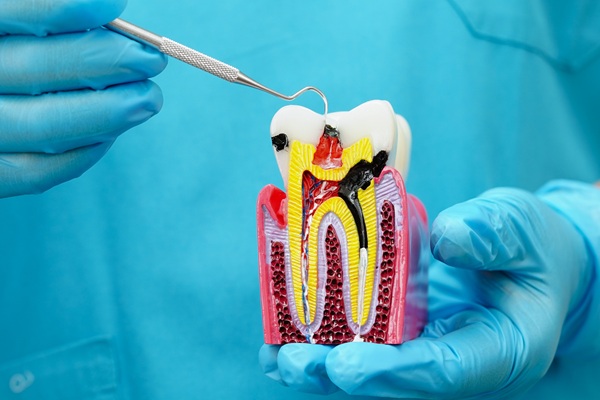What Is a Non-Surgical Root Canal?

A non-surgical root canal is an endodontic procedure known for preserving a tooth affected by severe decay, infection, or trauma, all without incisions in the gum tissue. Many patients become anxious when they hear the term "root canal," yet modern techniques can provide a gentler experience than expected. Endodontists often recommend this treatment when a cavity or injury reaches the deeper layers of a tooth, causing significant pain. By maintaining the natural tooth structure, there is less risk of complications linked to extractions, such as shifting teeth and bone deterioration.
How non-surgical root canal works
An endodontist typically starts by reviewing X-rays or digital images to determine how far decay or damage has reached. Local anesthesia numbs the affected area to minimize discomfort. Next, the endodontist creates a small access point on the tooth's surface to reach the pulp chamber. Specialized instruments remove the infected pulp, followed by careful cleaning, shaping, and disinfecting of the canals to eliminate bacteria.
After preparing the canals, the endodontist uses gutta-percha to fill and seal them, preventing bacteria from returning. They then close the with a filling, which keeps contaminants from re-entering. However, if the tooth has been weakened, the endodontist will recommend a crown to protect the structure from fractures. Since they make no incision in the gum tissue, most patients experience a fast recovery with minimal swelling compared to surgical alternatives.
Key benefits of a non-surgical root canal
A main advantage of a non-surgical root canal is that it allows the tooth to remain in place, helping to avoid bite problems that sometimes occur when a tooth is extracted. Missing teeth may cause neighboring teeth to shift, potentially leading to misalignment and the need for bridges or implants. Treating the internal section of the tooth addresses the source of infection while preserving healthy dental structures. Removing any inflamed or infected pulp helps the patient feel significant relief. Another benefit is the lower risk of post-operative complications since the procedure avoids cutting into the gums.
Aftercare and general maintenance
Following a non-surgical root canal, consistent care is crucial for long-term success. Brushing at least twice daily and flossing removes plaque and food particles that increase the risk of future decay. An antibacterial mouth rinse may provide an extra layer of protection by reducing harmful bacteria in the mouth.
Further, regular dental checkups are essential, as they allow an endodontist or dentist to monitor the restored tooth's condition and identify any early signs of trouble. If the endodontist places a temporary filling, steering clear of especially hard or sticky foods helps keep it intact. After the endodontist places a permanent filling or crown, the tooth functions as before treatment.
Schedule a consultation
A non-surgical root canal offers a reassuring, minimally invasive solution for anyone with deep tooth decay or damage. By eliminating infected pulp, disinfecting the canals, and sealing them, this procedure tackles discomfort at its source. If you are experiencing severe decay or an infection in a tooth, this procedure may be for you. Contact Santa Rosa Endodontics to schedule a consultation.
Request an appointment here: https://santarosaendodontics.com or call Santa Rosa Endodontics at (707) 706-2143 for an appointment in our Santa Rosa office.
Check out what others are saying about our services on Yelp: Non-Surgical Root Canal in Santa Rosa, CA.
Recent Posts
A general dentist can perform basic tasks in tooth care, such as X-rays, oral examinations, filling cavities, and extractions. However, patients may be referred to an endodontist for more complex work, such as certain root canals. When is it likely for a dentist to refer a patient to this dental specialist?While a filling can fix…
Root canal treatment is often the first line of defense for treating teeth with compromised pulp chambers. The pulp chamber is the innermost layer of a tooth, and it stores nerves, blood vessels, and connective tissues. The chamber is sealed off from the rest of the tooth to protect it against bacteria and other irritants…
A root canal can preserve and strengthen a severely damaged or infected tooth. When seeing a root canal dentist, asking informed questions can provide clarity, ease concerns, and improve treatment outcomes. Understanding the procedure helps make the experience more comfortable and ensures you are well-prepared for each step.While each patient's situation is unique, the following…
A person might need to see an endodontist for a wide variety of problems, mainly relating to how they can save patients’ teeth. All endodontists are dentists because they have completed dental school, but they do two more years of specialized study in the techniques used to preserve a person’s dentition. So, if you are…


